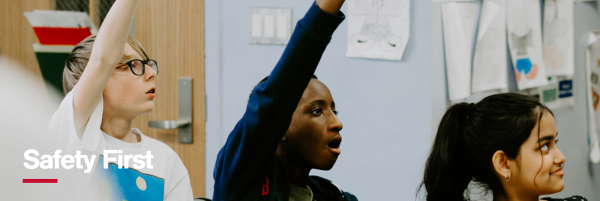Safety first: Real drug education for teens
Safety First: Real Drug Education for Teens is the nation’s first harm reduction-based drug education curriculum for high school teachers. The free curriculum consists of 15 lessons that can be completed in a 45- to 50-minute class period.
Each lesson is designed to engage students through interactive activities such as discussions and role-playing. The curriculum is aligned with National Health Education Standards as well as Common Core State Standards so it can be easily integrated into Health classes.
The Curriculum is available on the website of the Drug Policy Alliance.
Safety First lessons
1. What is a Drug?
Students examine their own beliefs about alcohol and other drugs by answering the question: “What is a drug?” They take a pre-class survey to assess their prior knowledge and skills.
2. Introduction to Harm Reduction
Students learn about harm reduction concepts and strategies, including abstinence, that will empower them to make healthy choices for themselves and others regarding substance use.
3. How Drugs Work
Students learn how drugs affect the body and the brain, and specifically the teenage brain. They further discuss the factors that contribute to physical dependence.
4. Drug Classes: Stimulants
Students learn about stimulant drugs, their effects, benefits and risks. They further discuss the harm reduction concepts particularly related to prescription stimulant drugs.
5. Drug Classes: Cannabis – Part 1
Students play “Fact or Fiction About Cannabis” activity to see how much they know about the drug. They work in groups to research statements about cannabis, and use the CRAAP test to evaluate their sources’ credibility.
6. Drug Classes: Cannabis – Part 2
Students learn about cannabis’ effects, potential risks and benefits, including the effects of edible cannabis. Student then share and evaluate each other’s research on statements about cannabis.
7. Vaping & E-Cigarettes
Students explore the inner workings of e-cigarettes in-depth. They conduct research to examine the health effects of vaping, using the CRAAP test to evaluate their sources’ credibility.
8. Drug Classes: Alcohol & Other Depressants
Students learn about the effects of depressant drugs with a focus on alcohol. They learn how to perform the recovery position and give advice about how to reduce alcohol-related harms using practice scenarios.
9. Drug Classes: Prescription & Other Opioids
Students take an in-depth look at opioid drugs, their effects, risks, and benefits. They will learn how to recognize the signs of an opioid overdose and respond appropriately.
10. Drug Classes: Psychedelics
Students learn about psychedelic drugs, their effects, risks and benefits. They reflect on drug references in the media, specifically music, and how they influence teens. They also complete an activity that demonstrates the risks of illicit drug adulteration, and learn about the harm reduction practice of drug checking.
11. Mental Health and Coping
Students discuss how drug use can be a mechanism for dealing with mental health issues, specifically stress and anxiety. They learn how to locate resources that can help them cope.
12. Understanding Zero Tolerance
Students learn about zero-tolerance drug policies and their impact on students’ health and well-being. Students also learn about restorative justice practices.
13. Health & Policy
Students learn about drug policies and America’s war on drugs. They discuss how drug policies impact health, and learn ways in which harm reduction-based drug policies can help improve health outcomes.
14. Looking Back, Looking Forward
Students review what they have learned by playing the “Just The Facts” Kahoot game. Students reflect on what they have learned by writing a letter to their future selves about drugs and drug use.
15. A Healthy Future
Students discuss their advocacy assignment from Lesson 12. They take a posttest to assess their understanding of the content covered in the curriculum.
